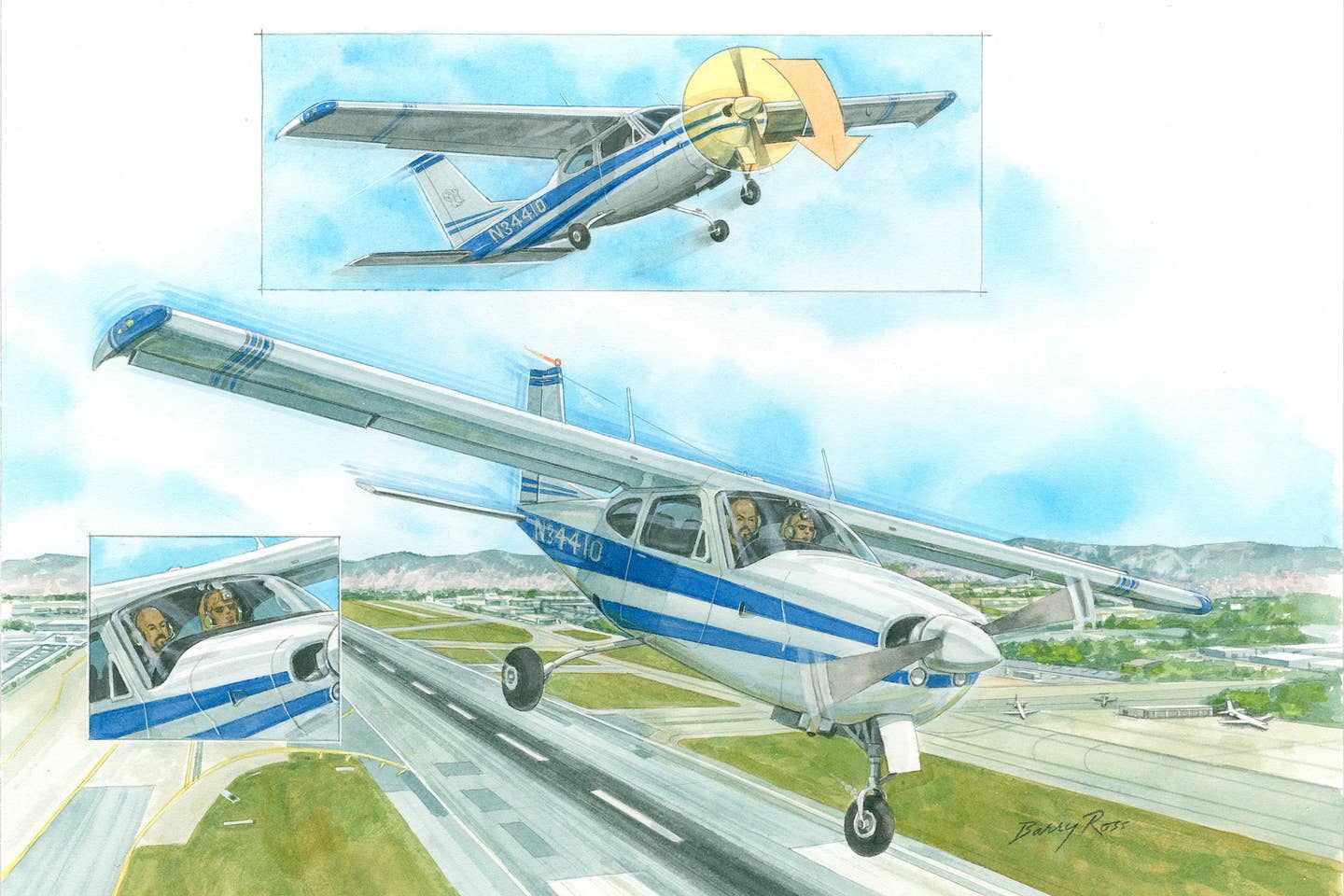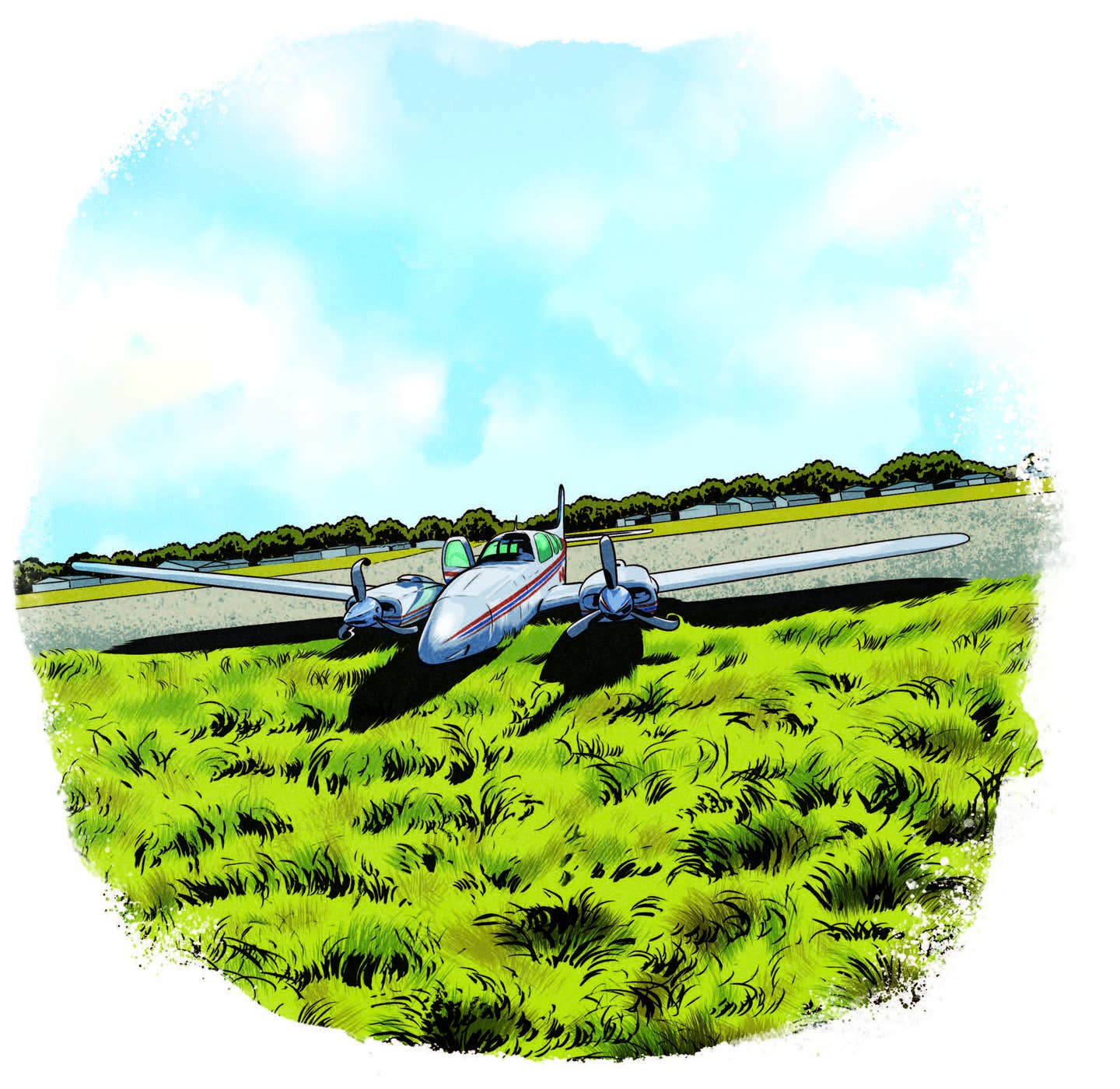
I learned about instructing from this. Barry Ross
I was providing flight instruction toward a commercial rating with a student whom I had recently helped obtain her instrument rating. We were flying my own Cessna Cardinal RG, and we had already flown together a great deal. In fact, she actually handled the airplane better than I did in most cases, especially landings. Because she was getting close to the check ride, every takeoff and landing was either a simulated soft field or maximum performance one, since those would be check ride items.
With most aircraft, max-performance takeoffs call for rotating at a specific airspeed, then climbing at V<sub>X</sub> until all obstacles are cleared, and pushing over to V<sub>Y</sub> and continuing in a normal climb. That’s not the case in a Cessna Cardinal RG, though. The POH shows V<sub>X</sub> to be 72 knots and V<sub>Y</sub> 82 knots. However, the maximum-performance takeoff calls for rotation at about 55 knots, then climb at 62 knots until all obstacles are cleared, which is a full 10 knots below V<sub>X</sub> and feels close to VSO. Then push over to 72 knots, clean up the airplane and continue to 82 knots, then normal climb out. It also calls for 10 degrees of flaps, and leaving gear down until all the obstacles are cleared and obtaining 72 knots.
Because of this very slow airspeed on initial climb, we practiced this at an altitude where a stall could be easily handled several times before using the procedure called for in the POH right off the runway. The airplane would climb with a very high deck angle just as the POH indicated, and it worked well. We did this many times and were always impressed at the performance of the airplane using this technique. There was no reference in the POH as to why this low airspeed was specified or why it was safe to use. My own thought was that there is no such thing as a specific V<sub>X</sub> when gear is down and flaps are at 10, and the POH does note that the pilot shouldn’t raise either until after pushing over to the published V<sub>X</sub>, so in fact, that 62 knots was equivalent to V<sub>X</sub> when in that configuration.
We had done these types of takeoffs so many times that I was completely relaxed when she was flying, and during landing as well. Instead of being spring-loaded and ready to assume control if something went wrong, I was sitting back, relaxing and watching for small details in her technique that could be improved upon for her check ride.
A few days earlier, I had read an article by Peter Garrison discussing the need for an immediate hard push forward on the controls in the event of an engine failure during takeoff and initial climb out because of the loss of the thrust vector, which would result in an immediate stall. That article may have been the reason we walked away from this event.
The day before the flight, we did some ground school, and I spent time discussing this situation in detail with the student. She had not understood the thrust-vector concept previously, and in most situations the Cardinal RG stall is a nonevent. But that loss of the thrust vector, low to the ground, at a high deck angle and low airspeed, would have serious consequences.
Fortunately, we were taking off this time from the Van Nuys Runway 16R, which is about 8,500 feet long. We always use all the runway and refuse intersection takeoffs, even when they used to be offered. I asked her for a short-field, maximum-performance takeoff. She reviewed the numbers with me, obtained the takeoff clearance, and we were rolling.
Read More: I Learned About Flying From That
All was going well and as usual until between 75 and 100 feet, when she was just starting to push over to V<sub>X</sub> with obstacles cleared, and she said, “Something is wrong.” I hadn’t yet noticed anything wrong, but as I said, I was sitting back too relaxed. Literally one second later, it felt as if she had simply pulled the throttle back to idle as she pushed hard on the yoke to get the nose down. My first thought was that she had felt or seen something that she didn’t like and was going to try to land. I came out of my relaxed mode quickly and tried to shove the throttle back in, but her hand was already on it, and it was already all the way in.
All of that probably took four or five seconds by the time I realized the engine really had failed, and we had few options other than to get it back on the ground as best we could. We had previously briefed that airport many times, and unless we had about 300 feet at the end of the runway, our only option was to land on the parallel street to the west, which also has heavy traffic and power lines.
That went through my head as I took over the controls, glanced over the glare shield, and thought there was just a chance I could get it back on the runway straight ahead before going through the airport boundary fence and onto another busy street. Power was at idle or off; I didn’t have time to figure it out, so I pulled the throttle all the way back out, kicked full right rudder and used left aileron to stay over the runaway in a full slip, and held 65 knots to balance not stalling in the full slip and max descent rate.
With that established, I hit the push-to-talk switch on the yoke and said, “Mayday, mayday, mayday, [Cessna Cardinal] is landing.” I knew there was a line of jets behind us for takeoff and didn’t want one released into our descent path. The tower knew my airplane and both of us well, and did not waste our time asking questions. They just stopped all other traffic. I got it down toward the end of the runway, and the tower asked if we needed assistance. I answered that I didn’t know yet and thought I had enough speed to clear the runway off the last taxiway. Once there, I stopped the roll, and then they again asked about assistance, and I asked them what they could see, thinking about fuel or oil leaks, smoke or fire. The equipment was already rolling and showed up a moment later.
We discovered the engine was still idling. We just looked at each other and started breathing again. It had all happened in about 30 seconds from her first noticing something was wrong. We never did determine for certain what had gone wrong either.
I’m also an A&P, and the next day I called a friend who is an A&P, and we took nearly everything in that engine apart, looking for anything that could have caused the engine to die like that. We found nothing, and the best we could determine after three days of working on it was it must have ingested a slug of water. Where that water had come from, we had no idea, but the airplane had not been out in the rain for more than a year, and was always hangared and flown two or three times a week. I had personally sumped it before this flight and found no water. We then test-flew it and found nothing wrong, and I flew it for five more years and never had another problem. The student obtained her commercial in the airplane soon afterward.
The most important thing I learned as an instructor is that I have never again been relaxed and sitting back during takeoff or landing in any airplane, no matter who is flying it. My hands are always in a position where I can immediately get to the controls, and my feet are always close to the rudder pedals, even in a single-engine aircraft. Even another two-second delay would have put us on a busy street off the airport instead of safely on the taxiway at the end of the runway. I honestly believe that article I read by Garrison a few days prior—and had briefed the day before—may also have made the difference.
This story appeared in the August 2020 issue of Flying Magazine

Sign-up for newsletters & special offers!
Get the latest FLYING stories & special offers delivered directly to your inbox






